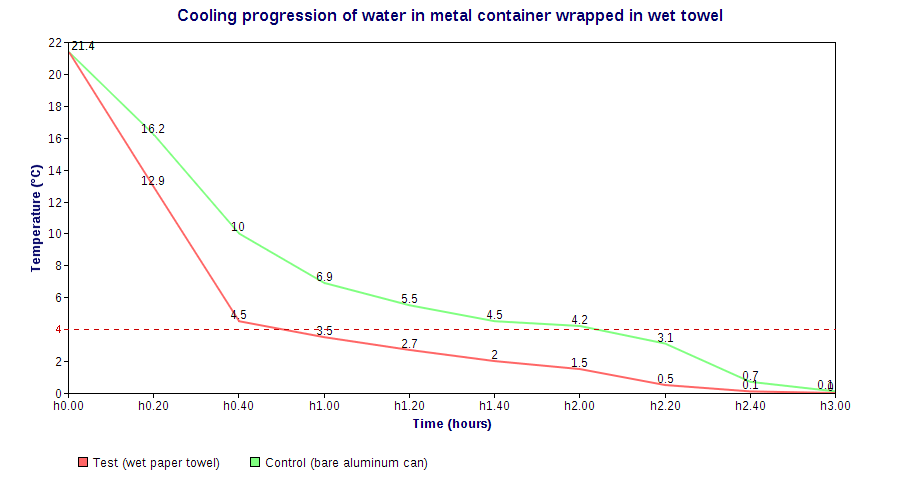I actually went ahead and spent some hours experimenting. Used two 500ml aluminum beer cans filled with water at room temperature, 21.4°C. One can wrapped in a paper towel soaked with an additional 20ml of water, one left bare as control. Shoved both in my small, non-ventilated house freezer at -14°C and measured temperature and weight every twenty minutes until water in both cans started forming ice. These are the results.

Allowing for some error from my cheap digital food thermometer, the towel-wrapped can cooled quite a bit faster than the control one. In fact, it reached the 4°C serving temperature in about 50 mins, more than an hour earlier than the control can. Notably, by that time it had already lost some 6ml of water, I suppose through evaporation/minor dripping, and ended up losing a total of 10ml by the end of the experiment (the control only lost 2ml).
So yes, the wet paper towel trick does seem to work quite nicely. I'd expect it to work even better if one were to use a ventilated freezer (faster heat exchange) and smaller containers (greater surface/volume ratio).
I also had a properly sealed beer can in there with a wet towel, same starting temperature, and it cooled to serving temp at about the same rate as the other can. A little quicker, because it wasn't taken out of the freezer for measurements until the 1-hour mark, when it was ready to be in my tummy.
Not very academic maybe, but I hope this provides some useful info!


